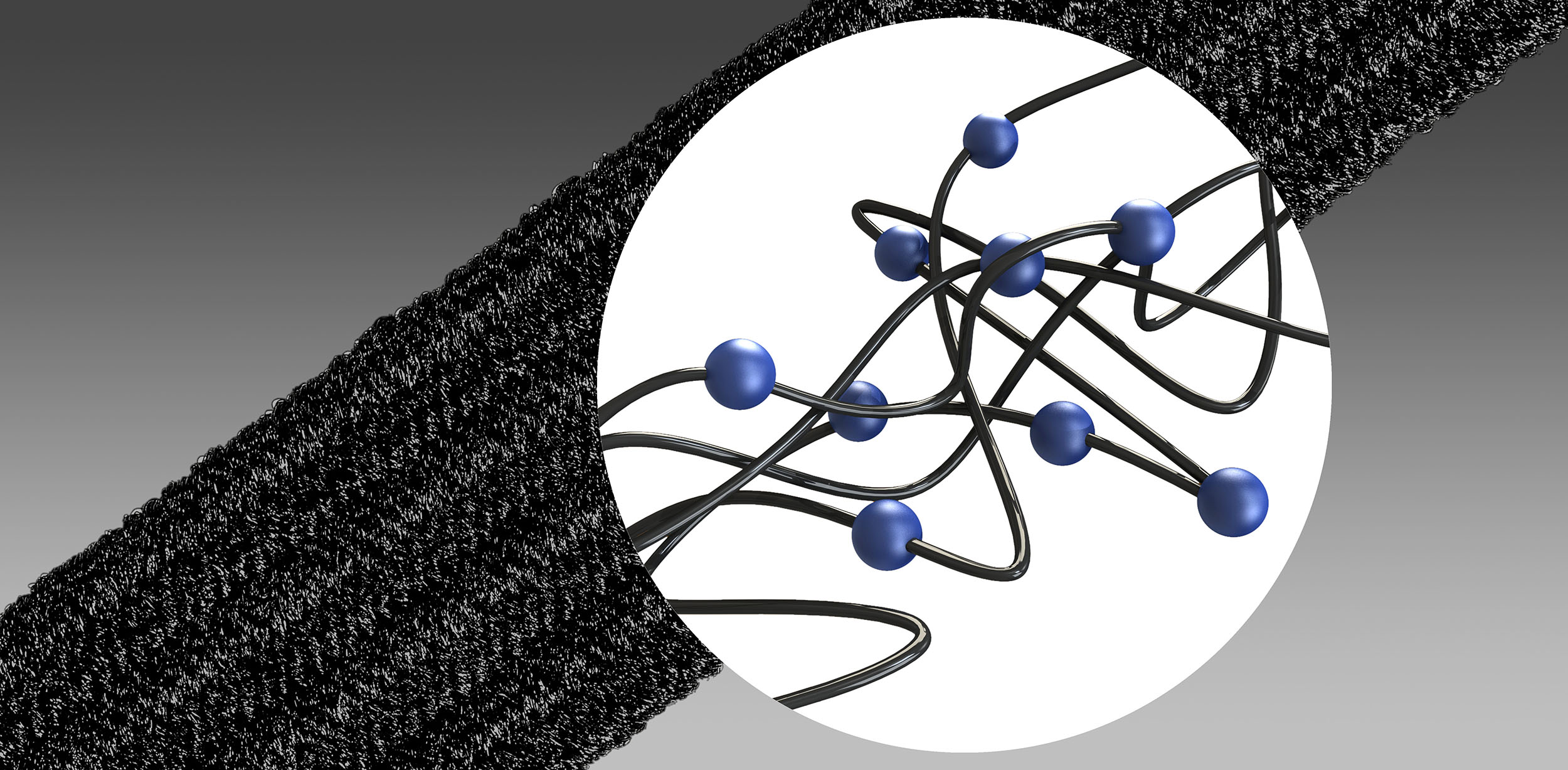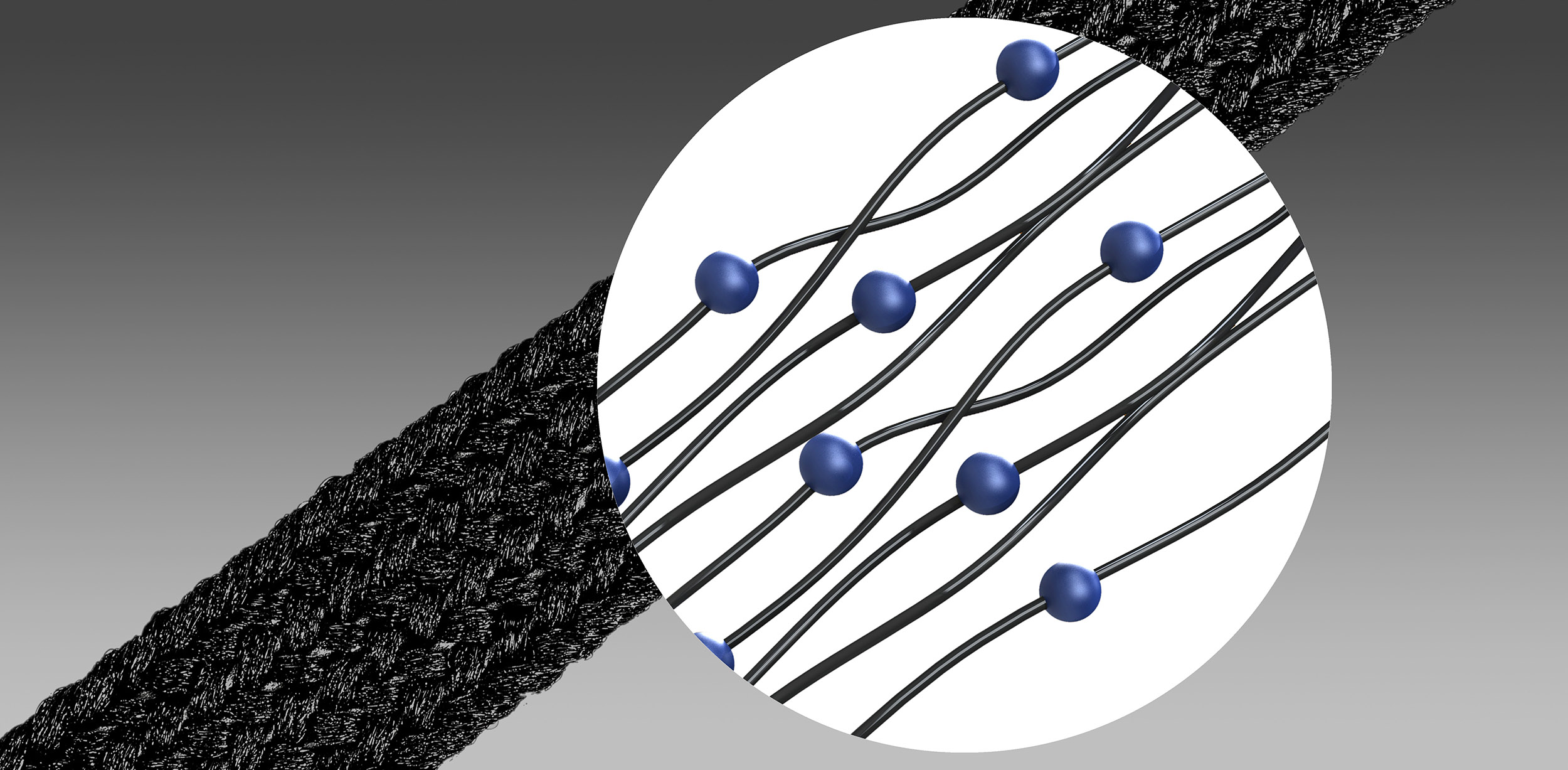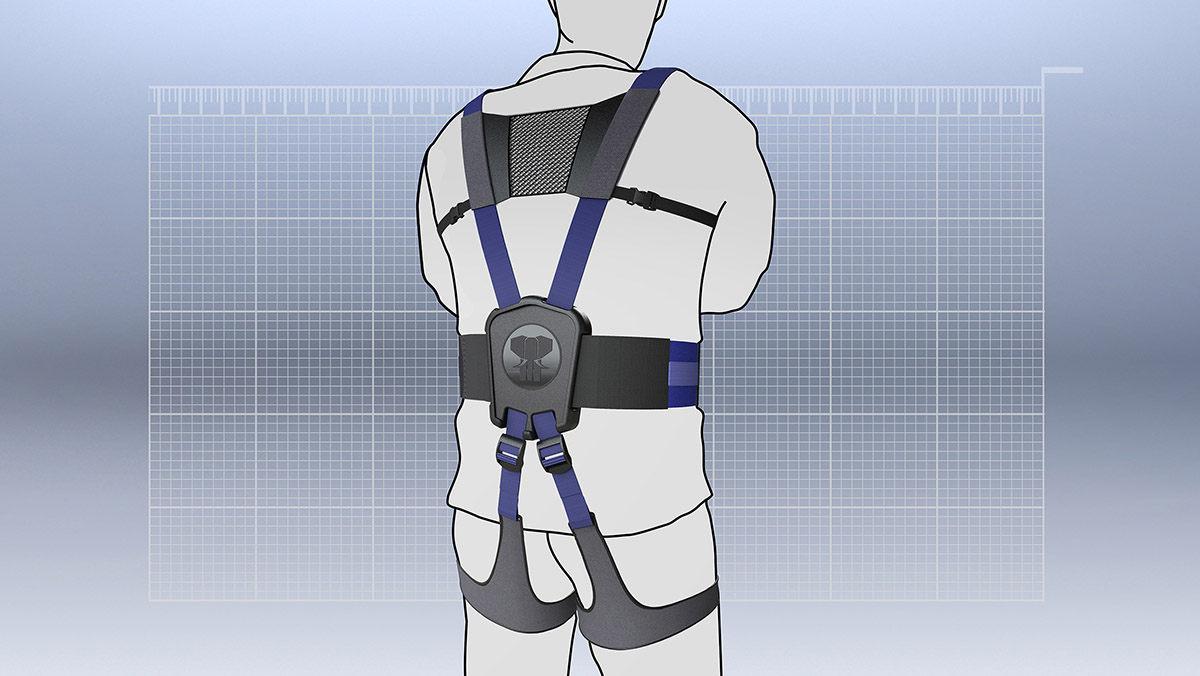
The Power of Elastics
25.01.2024
Why elastomers are elastic
Fixing a mobile phone securely in place, slipping comfortably into protective gloves, stretching the jumping surface of a trampoline, using an exoskeleton conveniently, and much more – many functions of our narrow textiles are based on the elasticity of the material. And the elasticity can vary greatly. From extremely high elasticity – for electric sliding doors, for example – to minimal elasticity – of an adjustment element in the vehicle interior, for example. We precisely define the textile’s elasticity depending on the task it needs to accomplish. We use yarns made of elastomers to do this.

Illustration A: coiled polymer chains

Illustration B: stretched polymer chains
Elastomers strive to restore order
Rubber bands are elastomers – strong but elastically deformable plastics. They are created by vulcanising natural or synthetic rubbers and consist of long, randomly cross-linked chain molecules that form what are known as polymer coils (Illustration A). Under tensile load, the elastomers deform, but they then return to their original shape. The reason for this elasticity is the ability of the randomly coiled polymer chains to react to a tensile load by stretching or “unravelling” the chains (Illustration B) and then returning to their preferred state: they stretch and contract again after the tensile load has stopped.
The elasticity of elastomers is therefore based on the static-dynamic equilibrium of order and entropy. The elastomer does not store any tensile energy in itself – like a steel spring does, for example – instead it increases its internal, molecular order. They radiate the energy fed in during stretching as heat. On contracting, they draw in ambient heat once again.
In extremely cold conditions, the elasticity of the elastomers decreases; when the temperature rises, it increases. This potential expansion goes well beyond the typical thermal expansion of solids.
Elastics are omnipresent
At JUMBO-Textil, we leverage the amazing properties of elastomers for such varied industries as automotive or medical, industry or sports. In this way, elastomers contribute to our mobility and health, our comfort and our free time.


Whether this be the braiding in an exoskeleton or a webbing to fix a mobile phone in place – the specific elasticity of the narrow textile is crucial for the specific functionality.
Photos: JUMBO-Textil




